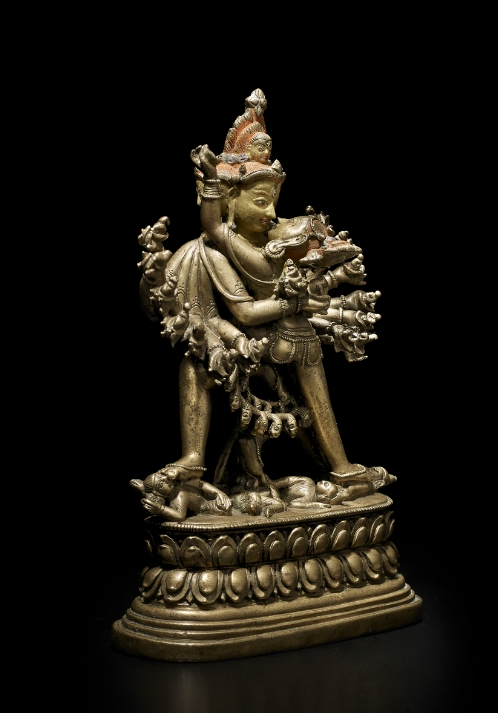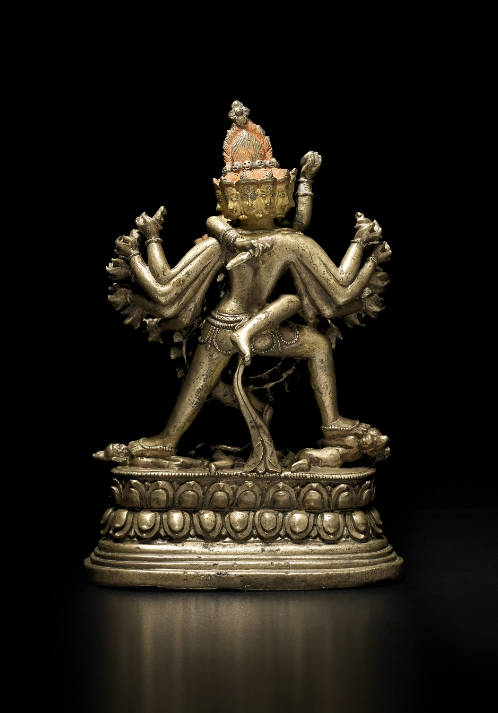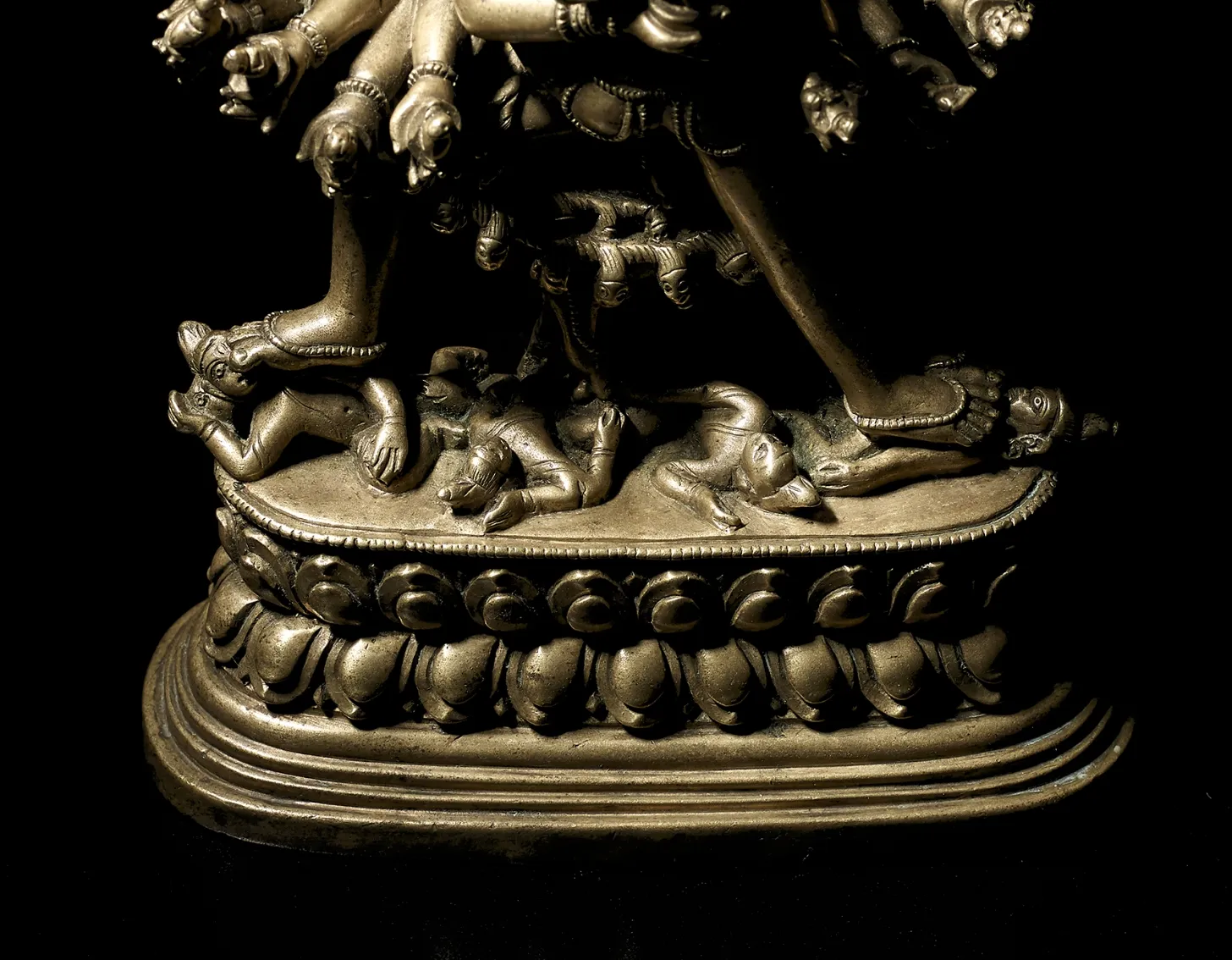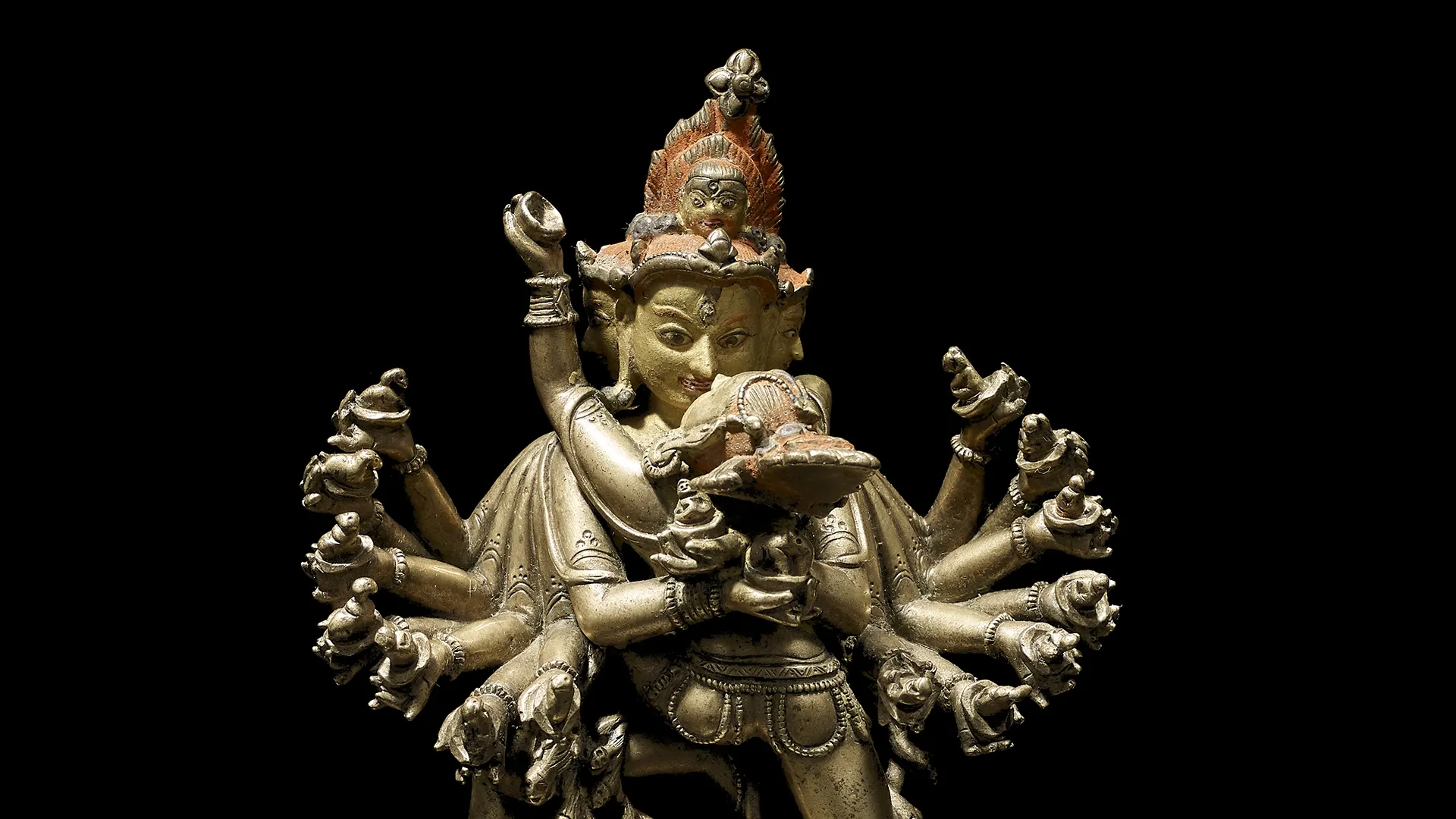The remarkable c. 12th-century sculpture from eastern India represents the sixteen-armed deity Kapaladhara (“Holding the Skullcup”) Hevajra (cat. no. 10). Embracing his consort Nairatma (“Selfless”), he steps to the right while trammeling figures associated with egotistic concerns.
Each hand holds aloft a skullcup bearing an animal or symbol associated with spiritual transcendence. Nairatma captures Hevajra’s gaze and wraps her left leg around her partner, holding a skullcup (kapala), and a thin knife (kartrika). The brassy copper alloy used in this sculpture is one of a variety of alloys used in the medieval sculpture of eastern India.
The relatively clean surface of the sculpture, and the presence of pigment on the face and hair indicate the sculpture was transported to Tibet during the medieval period where it was preserved in monastic collections until the past century. Particularly the face of Hevajra is very skillfully painted. Red eyes, the upper eye lids elongated with a fine black line, red lips enclosing white teeth and fangs, and flaming eyebrows and hair all help to bring to life the deity envisioned in this sculpture.


During the medieval period, images of gods and goddesses entwined in sexual embrace (maithuna) appeared in Buddhist sculpture and manuscript illuminations. The growing popularity of maithuna images in India was fueled by the emergence of Tantra, a pan-Indian movement that advocated innovative methods, including sexual energy to be harnessed as a vehicle for spiritual liberation.
Earlier Buddhism emphasized a gradual path of spiritual evolution through compassionate deeds and the cultivation of spiritual attributes — patience, generosity, and the like — to be perfected over many lifetimes. Tantra postulated that spiritual awakening arose not from “good” or “bad” behavior, but from fully recognizing the divinity that dwells within.
The archetype of Tantric practice was the yogi, dedicated to meditation and yogic rites designed to rid the ego of its fears and attachments. Many Tantric exemplars had their formative training in monastic centers like Nalanda and Vikramashila, where they became critical of the purely dialectical knowledge available in the rarefied intellectual atmosphere of the Buddhist monasteries. They left these centers to meditate in forests and other secluded locales. The meditative practices, and the iconography associated with them, were closely associated with a body of texts known as the Yogini Tantras and Mahayoga Tantras.

